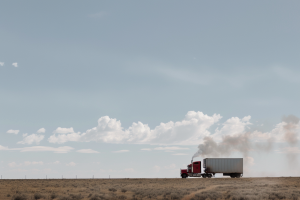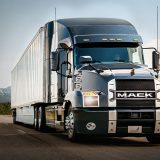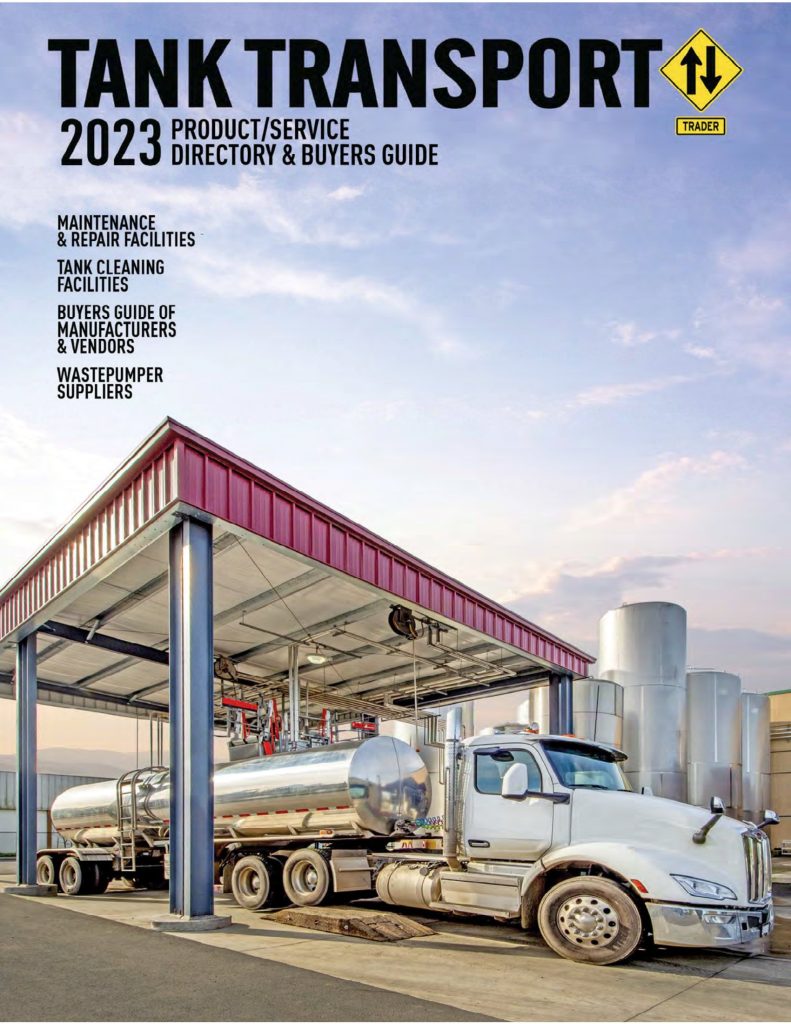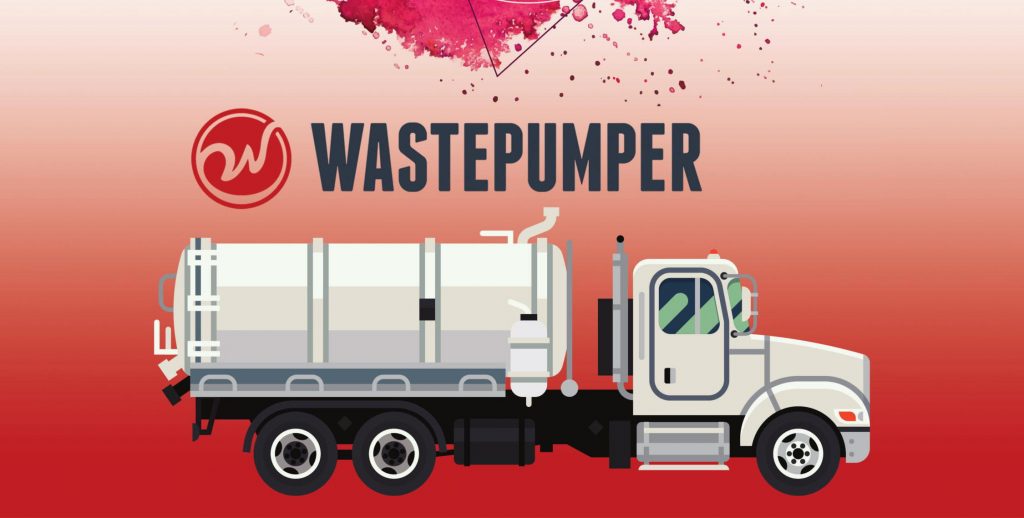- Countdown to Compliance: Are Trucking Companies Ready? Explore how the impending EPA truck emissions 2027 standards are driving a surge in pre-buy activities. Understand how this strategic move might reshape the trucking landscape in anticipation of stricter regulations.
- Navigating New Norms in Trucking: Strategic Shifts Ahead Uncover the strategic maneuvers by leading firms like Paccar and Ryder System as they prepare for the strictest emission regulations to date. Discover their approaches to adapting to new environmental standards.
- Balancing Costs and Compliance: The New Reality for Truckers Dive deeper into the financial and operational impacts of the EPA’s new emissions framework on the trucking industry. Examine how these changes affect everything from fleet management to technological advancements and overall industry compliance.

2027, A Watershed Year for Trucking Emissions: Industry braces for a pre-buy surge as tougher emissions standards approach.
As the Environmental Protection Agency (EPA) gears up to introduce phase three greenhouse gas emission standards for 2027, the trucking industry anticipates significant ‘pre-buy’ activity starting as early as 2025. This strategic response aims to circumvent higher costs associated with new regulations by investing in older models before the implementation of tougher standards. For more insights on how emissions standards have evolved, check out this page.
Navigating the Challenges of EPA Truck Emissions 2027: Understanding Phase Three Standards
The Trigger for Pre-Buy Activities in Trucking
As the EPA gears up to implement its Phase Three greenhouse gas emission standards, set to start in model year 2027, industry leaders like Paccar and Ryder System are bracing for an increase in pre-buy activities. These firms anticipate that the stringent new standards will lead fleets to purchase older models in the next few years to avoid the higher costs associated with compliance to the new regulations. Learn more about the EPA’s initiatives in regulating truck emissions by exploring this page.
Industry Responses to Upcoming EPA Regulations

The push towards zero emissions: Is the technology ready to meet EPA’s ambitious targets?
During recent discussions, executives from major trucking companies have voiced concerns about the financial implications of the EPA’s new standards.
Enjoying our insights?
Subscribe to our newsletter to keep up with the latest industry trends and developments.
Stay Informed“Robert Sanchez, Ryder Chairman, indicated that the pre-buy activities could mirror past trends where fleets ramp up purchases ahead of regulatory changes. The expectation of increased upfront and maintenance costs under the new standards has heightened these concerns.“
Historical Context and Industry Trends
Historically, the trucking industry has seen spikes in vehicle purchases in anticipation of stringent regulations. This pattern is expected to continue as the EPA truck emissions 2027 deadline approaches. The new EPA standards, which are more than 80% stronger than the current ones, have set the stage for significant industry shifts, pushing companies to either advance towards newer technologies or hold onto older, less costly models for longer periods. Stay updated on the latest trends shaping the trucking industry, click here.
National Automobile Dealers Association’s Warning

Will operational costs for truckers skyrocket under new EPA regulations?
The National Automobile Dealers Association has raised concerns that the impending standards might encourage fleets to delay upgrading their vehicles, potentially leading to prolonged use of older, more polluting trucks. This reaction could counteract the environmental benefits intended by the new regulations. Discover more about sustainability efforts within the trucking sector by visiting this link.
Research Insights on Pre-Buy Timing
According to EPA research, significant pre-buy activities are typically concentrated within a year or less before the implementation of new standards. This timeframe aligns with the industry’s historical purchasing patterns, indicating a critical window during which major buying decisions are made.
Legislative Challenges and Industry Opposition

Small business truckers at a crossroads: Balancing survival and sustainability.
Amidst these regulatory changes, there has been legislative pushback. A bill introduced in both the House and Senate seeks to revoke the EPA’s Phase Three standards, arguing that the targets set for post-2030 are unrealistic given the current technological landscape in zero-emission vehicles. For additional insights into the technological innovations in trucking, explore this page.
Concerns from Small Business Truckers
Small business truckers, who represent a significant portion of the industry, have expressed concerns about the potential for regulatory costs to drive them out of the market. This sentiment is echoed by industry leaders who fear that the stringent new standards could disproportionately impact smaller operators. To dive deeper into the topic of zero emissions and its role in the future of trucking, follow this link.
Legal and Legislative Challenges to EPA’s 2027 Emission Standards
Congressional Opposition
Discuss the bipartisan concerns raised by more than 30 members of Congress about the rushed nature of the rulemaking process and their calls for more careful consideration. Highlight the legislative efforts being made to overturn the new emission standards through the Congressional Review Act. This part of the section can underscore the political dynamics at play and the potential hurdles in implementing the new standards.
Industry Legal Challenges

Renewable diesel: An overlooked solution in the rush to zero emissions?
Detail the legal threats posed by industry groups such as the American Petroleum Institute and the American Fuel and Petrochemical Manufacturers. These groups argue that the standards could stifle the development of alternative technologies like renewable diesel, which they claim are more feasible and cost-effective solutions in the short term. Mention their readiness to take these challenges to court if necessary.
Potential Impact of Legal and Legislative Actions
Summarize the possible outcomes if these challenges succeed, including delays in the implementation of the standards or a complete overhaul of the regulations. Discuss how this uncertainty could affect the trucking industry, from manufacturing to operational costs and compliance timelines. Understand the strategies being employed to optimize operational costs under new regulations, explore this link.
Conclusion

Congressional Review Act: A legislative counter to 2027’s stringent emissions standards.
The introduction of the EPA’s Phase Three greenhouse gas emission standards represents a critical juncture for the trucking industry. With the standards set to take effect in EPA truck emissions 2027, companies are navigating the dual challenges of compliance and economic viability. The shift towards stricter emissions control is poised to reshape the industry, driving advancements in technology while also prompting strategic responses from businesses aiming to mitigate the financial impacts of these changes.
The broader implications of these regulations extend beyond immediate industry adjustments, promising significant environmental and public health benefits. As outlined by the EPA, the anticipated outcomes by 2045 include drastic reductions in air pollution-related health issues and substantial economic savings from decreased healthcare expenses and increased productivity. These developments underscore the EPA’s commitment to fostering a cleaner, more sustainable future through rigorous regulatory frameworks that encourage the adoption of advanced emission control technologies.
Recap of Key Developments in Trucking Emissions Phase Three Standards
Summary of Crucial Changes and Industry Responses
- Introduction of Phase Three Standards: Starting in 2027, these ambitious standards aim to slash greenhouse gas emissions from heavy-duty trucks by more than 80% compared to current levels. The ultimate goal is to push the trucking industry towards a zero-emission future, significantly enhancing air quality and reducing the sector’s environmental footprint.
- Industry’s Pre-Buy Strategy: Major trucking companies are expected to ramp up their purchases of older, less expensive trucks before the 2027 standards take effect, in anticipation of rising costs and more stringent regulations. This trend could potentially delay the intended environmental benefits of the new regulations.
- Legal and Legislative Pushback: Highlighting the complexities of regulatory changes, industry groups and some lawmakers are actively challenging the feasibility and practicality of the post-2030 targets. They argue for a reevaluation to ensure that the standards do not stifle technological innovation or economic growth within the trucking sector.
- Impact on Small Business Truckers: Growing concerns among small business truckers suggest that the new regulations might disproportionately impact their operations, risking their financial viability due to increased costs associated with compliance.
- Economic and Health Benefits: Despite controversies, the EPA projects that by 2045, the new standards will deliver significant public health benefits, such as reducing premature deaths and hospital visits, and economic advantages, including lower health care costs and fewer lost workdays.
These developments underscore a critical period of adaptation and strategic decision-making within the trucking industry, influenced by evolving environmental standards and the overarching imperative for sustainable practices.
Further Reading: Understanding EPA’s 2027 Emissions Standards
- EPA’s Official Page on Greenhouse Gas Emissions: Learn more about the EPA’s regulations and initiatives directly from their official resources. This is a great place to understand the framework and specifics of the new regulations set for 2027. Visit the EPA site.
- Harvard University’s Environmental Research: Explore how one of the leading universities approaches environmental issues, including emissions and sustainability. Harvard offers in-depth research and educational resources that could provide a broader scientific context to the EPA’s regulations. Explore Harvard’s environmental programs.
- University of Florida’s Research on Sustainability: The University of Florida conducts significant research on sustainability and environmental technology that could be relevant in understanding the broader impacts of new emissions standards. Their work includes advancements in environmental technology that could benefit the trucking industry. Learn about UF’s sustainability research.




















